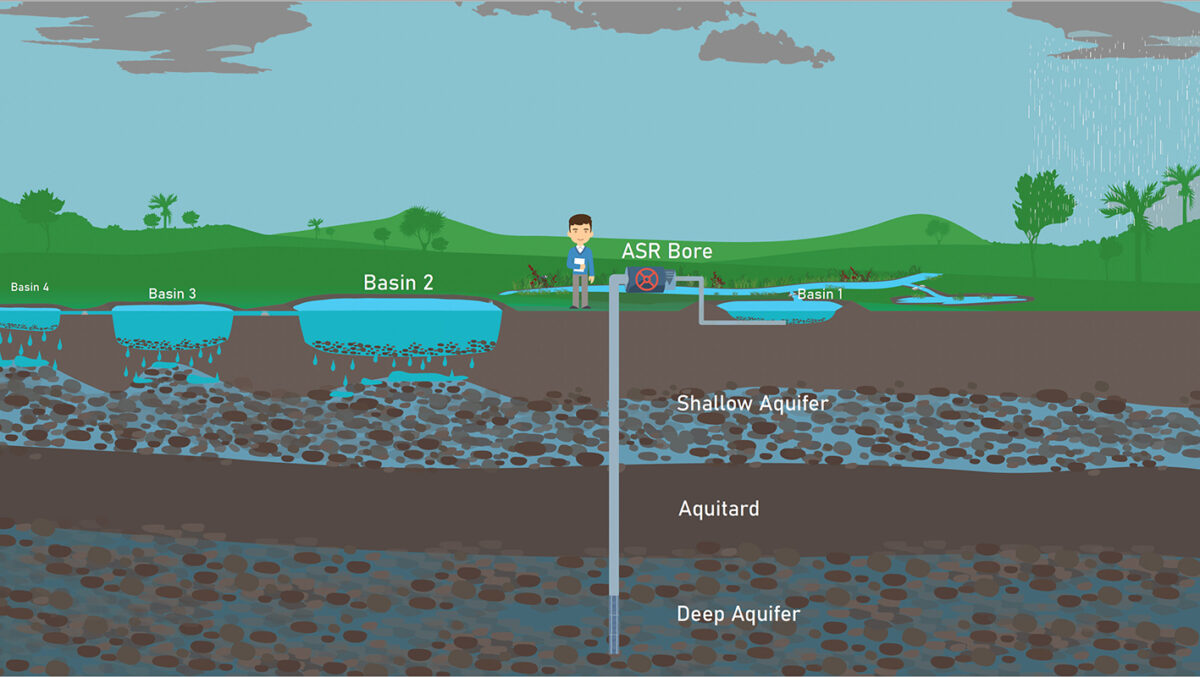Two projects are underway in Hawke’s Bay to explore the proposition that prudent management of our rivers can yield valuable ‘re-charge’ water to the aquifers that supply our drinking and irrigation supplies.
In Central Hawke’s Bay, the trial is called the Managed Aquifer Recharge project (MAR). In this small-scale pilot, high quality water will be taken from the Waipawa River during high flows and piped two kilometres across farmland to a recharge site in Tikokino above the Ruantaniwha aquifer. There, a series of ponds will allow the water to soak through the gravels and sediments to recharge the shallow aquifer below, helping to then feed springs and wetlands. The pilot will also test injecting water into the deeper aquifer, from where most of the drinking and irrigation water is withdrawn.
The project has recently received official consent, after a painstaking process to get all stakeholders on board. Over the last two-years, the MAR project team has worked closely with marae located near the Waipawa River or whakapapa to the Ruataniwha Aquifer, and landowners of the pilot site on how it will be designed, operated and monitored.
Funding to get to this point has been provided by the HB Regional Council and Kānoa – Regional Economic Development and Investment Unit. Announcing the consent, HBRC Chair Hinewai Ormsby noted: “This consent allows us to proceed with the pilot, however we’ll be balancing when that happens with the wider funding environment we find ourselves in following Cyclone Gabrielle.”
And referring to environmental concerns, she commented: “While we have world-leading MAR scientists heading this project and confidence in the protections in place, we are listening and working through those concerns. This is a limited pilot, with a small impact area. Strict consent conditions will mean only high-quality water will be drawn, filtered and used to recharge the aquifers. The pilot will be the subject of a comprehensive and live monitoring programme to be developed and delivered in partnership with mana whenua.”
This is one water storage project that merits moving forward. Hopefully HBRC will find the cash. More detail here.
Meantime, on the Heretaunga Plains another project is underway to understand whether better management of the Ngaruroro River might yield even more ‘natural’ recharge than already occurs.
This five-year project – the Braided Rivers Recharge research project – is led by scientists from Lincoln Agritech, working with HBRC and other partners, and is funded by MBIE (two rivers on the South Island are also being studied).
There’s no doubt that the Ngaruroro is a major source of recharge water for the Heretaunga aquifer. The tantalising proposition being examined in this research is whether widening the stopbank-protected river corridor and alternative gravel management might significantly increase the recharge. And have collateral benefits in terms of flood control and biodiversity.
Very early data from the project suggests that greater recharge might be feasible. In which case, there might be an opportunity to make better use of our ‘natural’ underground bathtub.
This project is still in its early stage, with more detail available here.


Whatever happened to the aerial surveys and mapping , imaging, of the plains and the water resources? Done about 3 years ago, I dont think the results have ever been made public.
Good stuff Baybuzz.
A tantalising aspect of the Braided Rivers research is that both floodplain width and gravel management may be levers we can pull to improve the water supply/demand balance. This challenges previous thinking blindly focused on water allocation, water use efficiency and water storage. And on almost exclusively blaming irrigators for the state of our lowland waterways, rather than taking a more holistic view of water management and water use.
Even better, tangata whenua have been in on the Braided Rivers project since the get-go and the findings point to more ‘natural’ interventions that could help the community come closer to agreeing on highly contentious Heretaunga Plains water management settings.
Kia OraTom.
This is a good idea. It is however just a dam. It was done in NZ in pre historic times. There are areas where the limestone bedrock was shaped to allow the excess water to fill and drain into the aquifer. Tree roots now choke the rivers and erode the pre-historic flood management. We are planting too many trees close to waterways . The rivers and lake, prehistoric management of floods has mostly been destroyed by all those trees. This water diversion plan must not be ruined by the race to get carbon credits
The Hastings District Councils fraudulent and dangerous scheme to plant trees. The trees cause the rivers to flood on the fertile plains and that land value drops. The councils buy all the flooded land and then raise the value of that extremely fertile land, before selling it back to mostly Chinese buyers.
Nga Mihi Tom
Martin Laverty.
What was the outcome of a similar recharge pilot on the Ngaruroro near Roy’s Hill? It was probably in the early 1990s?
Certainly seems a sensible option compared to an expensive dam